It nice names venous catheters for pediatric wards. Nurses use such a name for children, needles were not so terrible. When doctors to finally diagnosed my daughter, butterflies was everywhere on her body. There wasn’t a single vein in which could knock needle (catheters was even on the feet). On my picture I wasn’t able to put so many butterflies like she had.
My series is about leukemia, but is in a very subjective and personal way.
When my daughter was 3 year old fell ill on this disease. During this time, illness, hospital, treatment, nuisance and anxieties become common place our family.
This series is something a kind of catharsis, an attempt to close emotions and experiences in pictures. I made these in wet plate collodion (ambrotype). Choice this technology was not accidental. I see a strong relationship this technique with medicine (after all kolodion was formerly used in medicine for wound care). That purity which you need to keep, almost sterile and careful bring my memory how we took care of our daughter. Glass plates cleaned the same measure that I used to took care my daughter. Next reason to use this technique is the color black, which in my culture is associated with death and mourning. But the most important reason for choosing this technique is prone to errors. For me the heavy disease in childhood is mistake (error) – the imperfection of our lives. I use images of my daughter, her toys, things that we used in hospital and home (masks,bandages) and insects and plants (symbols life and death). [Official Website]
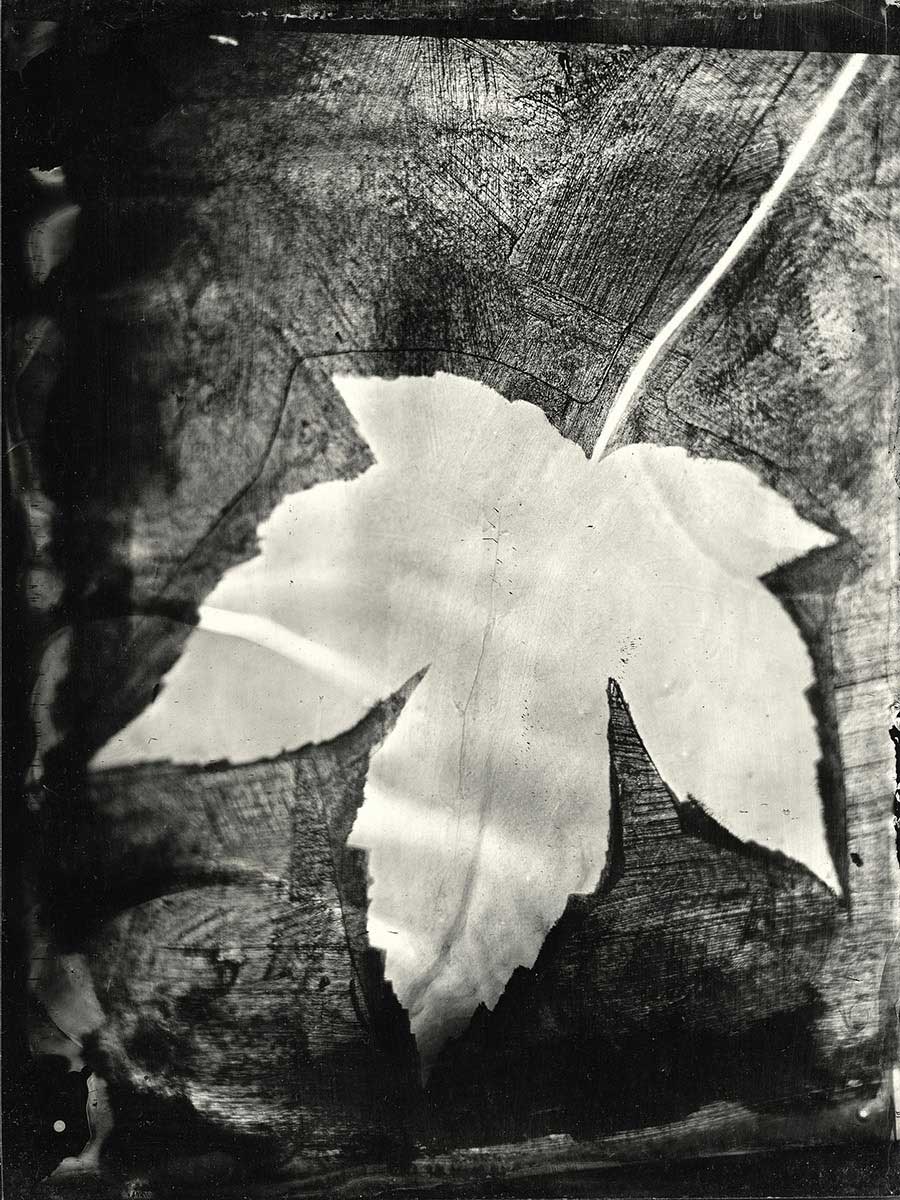
The blood is our dye. Children during chemotherapy are pale, almost white. When I look at the sick kids, then I think about world without colours.
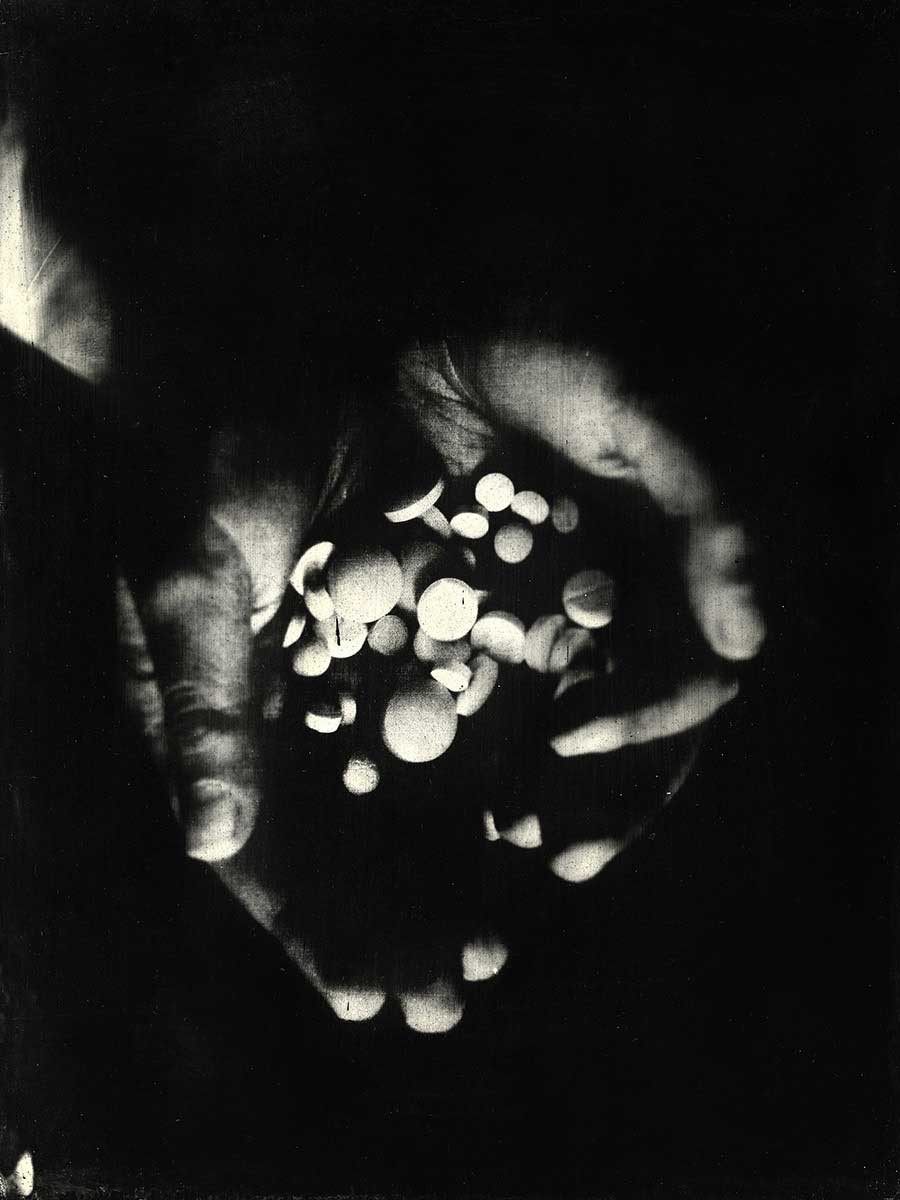
Pills like candys.
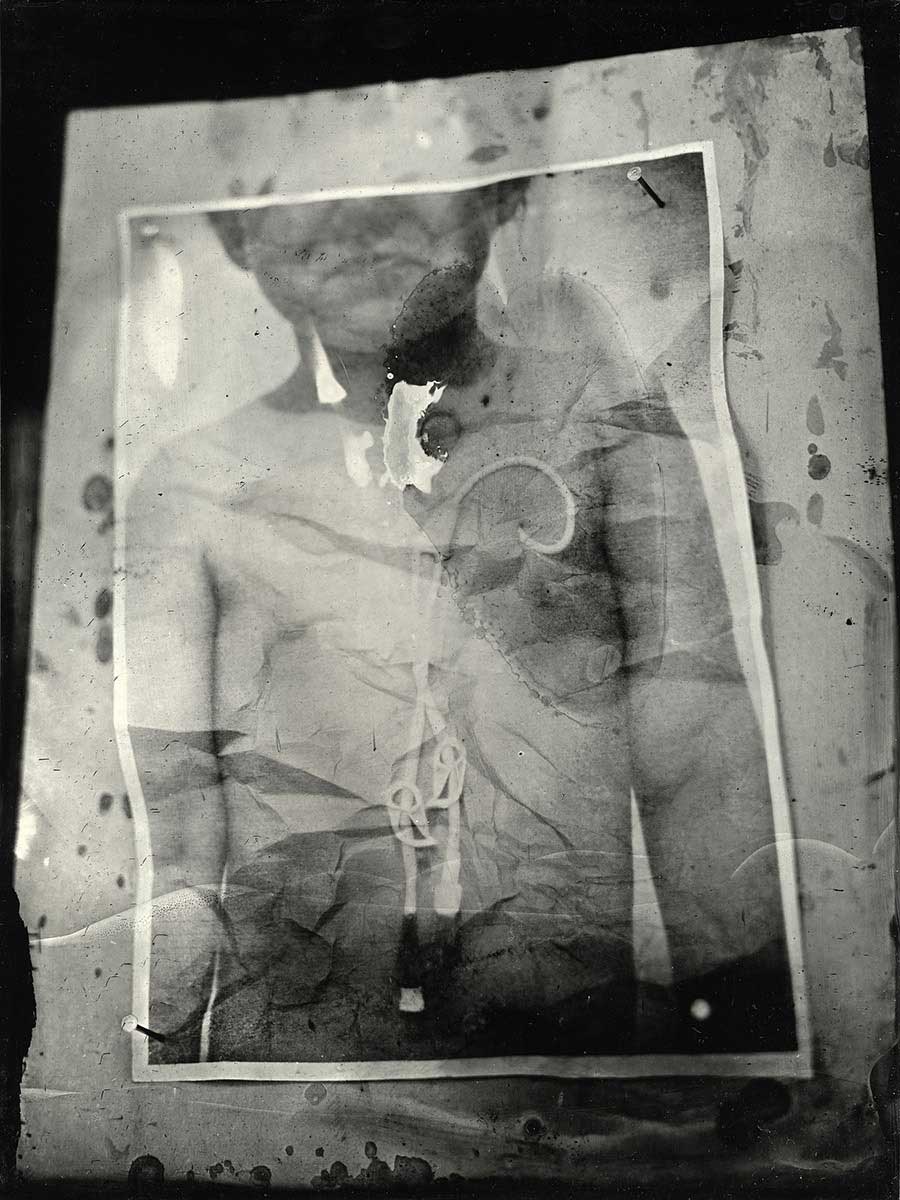
With two trumpets. Elephant – nice name for the central catheter. Great friend Rozalka, thanks to him did not have to post new “butterflies” and poke. When doctor decided to take out, Rozalka cried behind him last night before surgery and immediately after awakening from anesthesia.
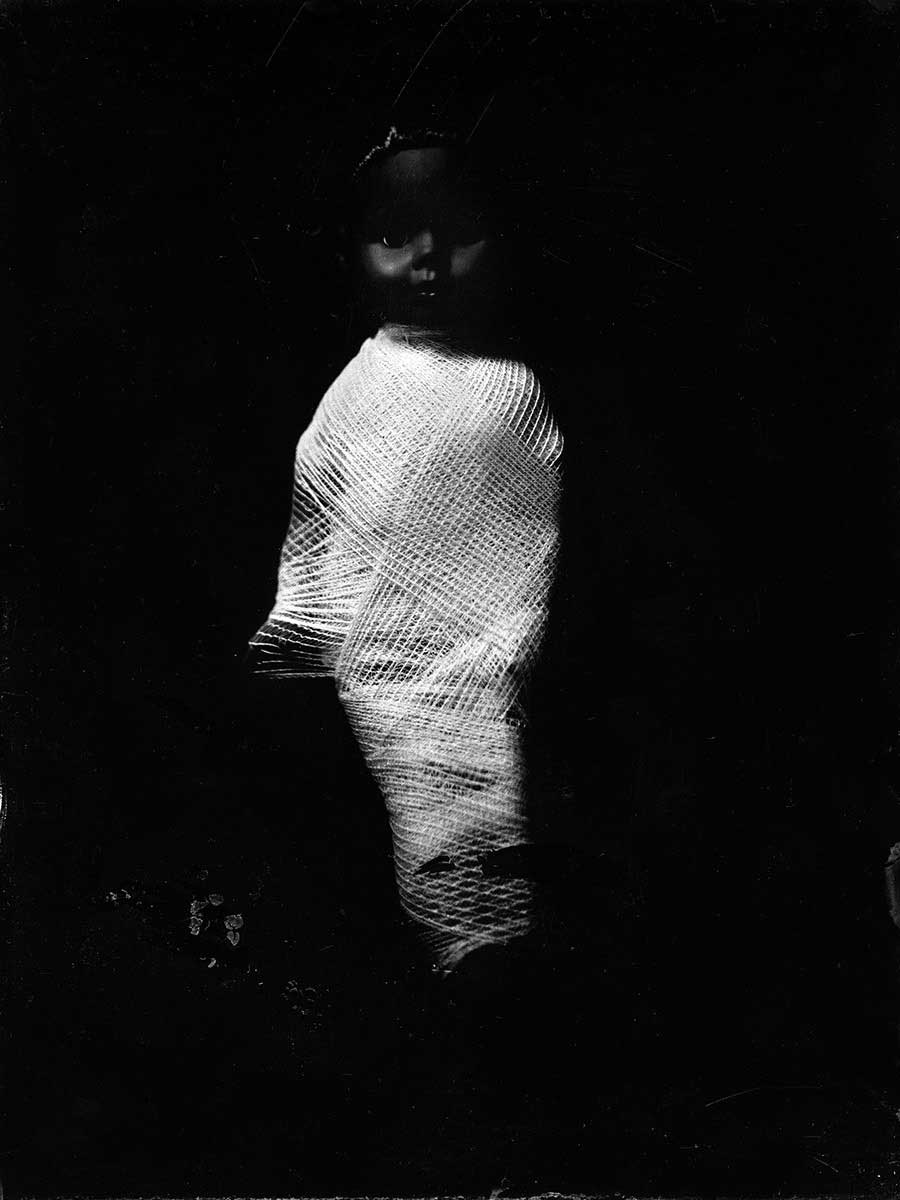
Favorite game my daughter was “taking blood” from toys and doing “puncture”. On my photo, it is combined with a huge feeling of confinement and restriction, which is essential in this disease.
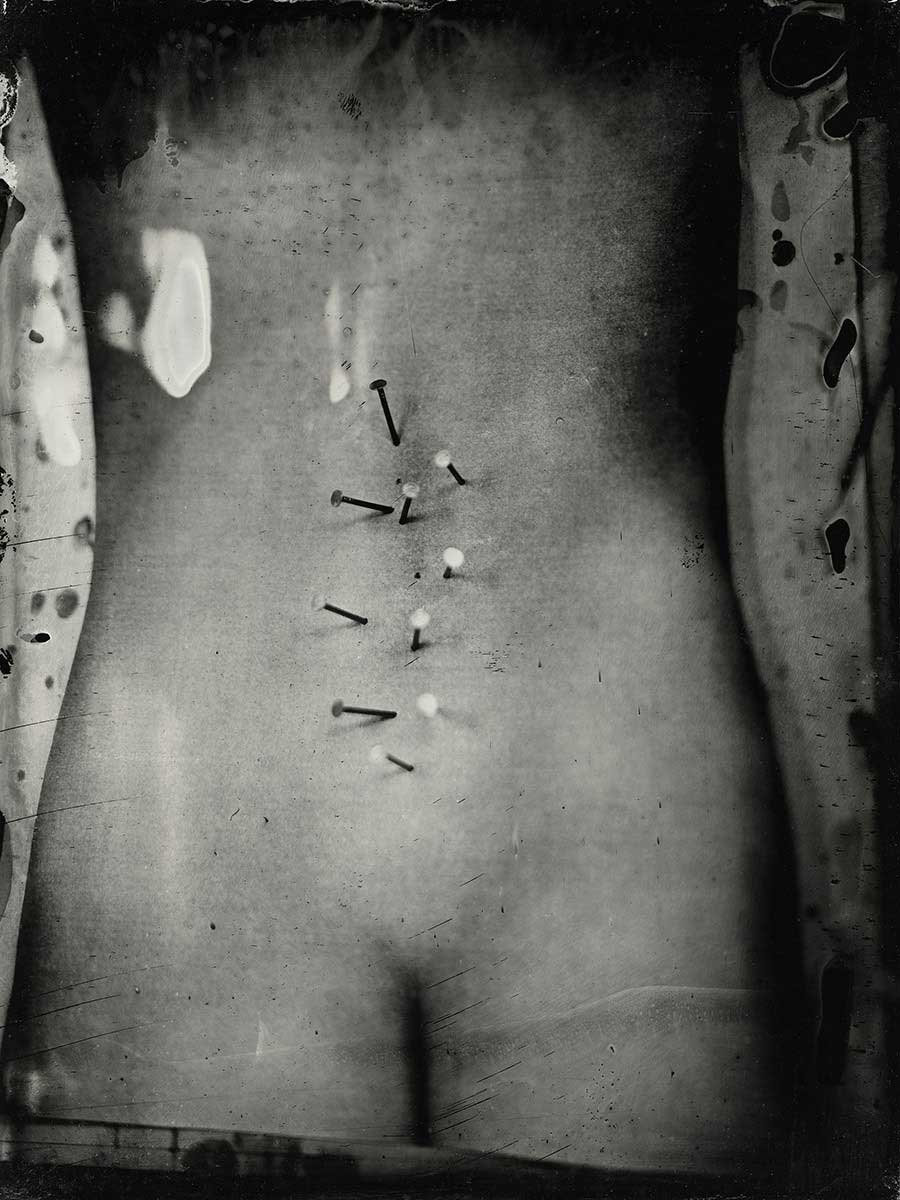
The worst from treatments for Rozalka. A big needle. Puncture in the spine. I think, she had more than 20. I did not count.
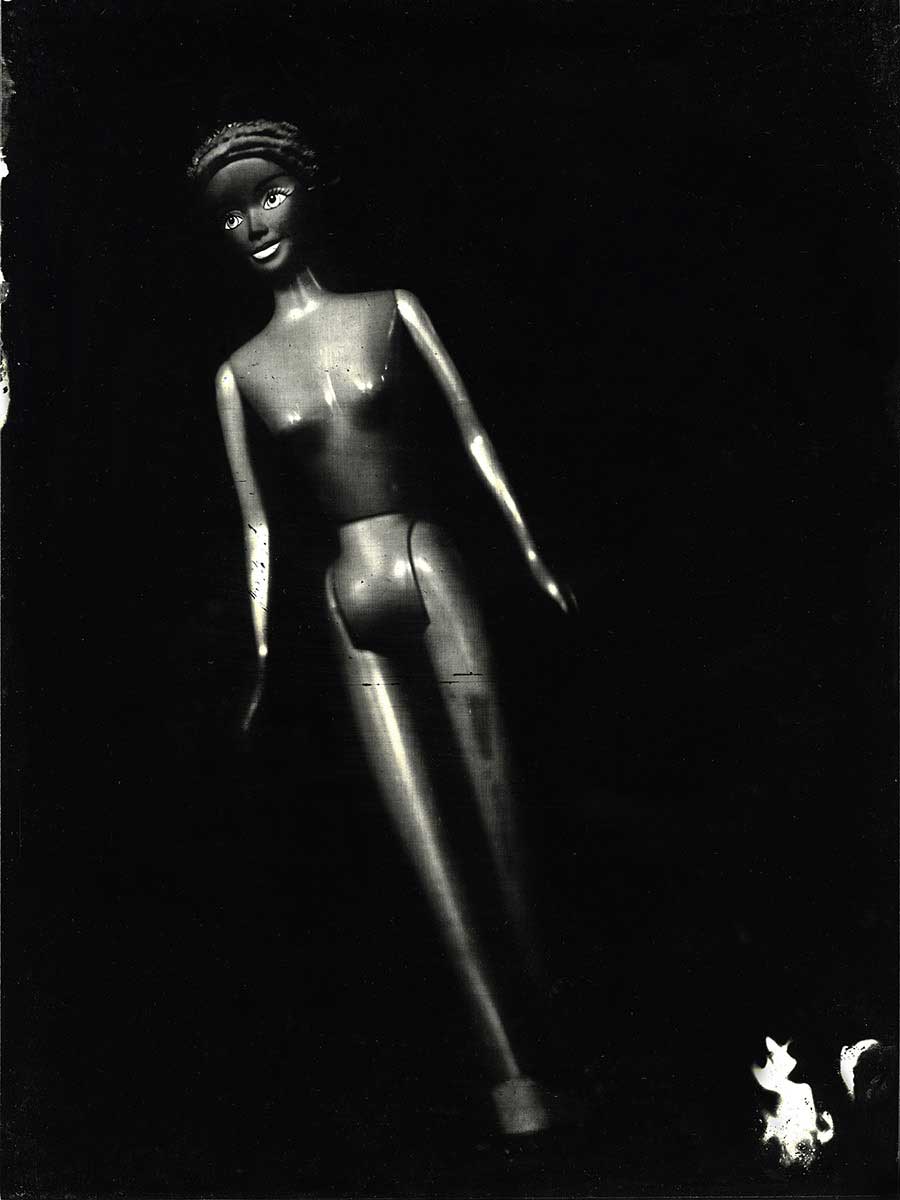
We returned to home after a long stay in hospital. I went to my daughter’s room and saw it. My daughter cut hair her doll. Kids want to play with dolls similar to each other. Cute but without hairs.
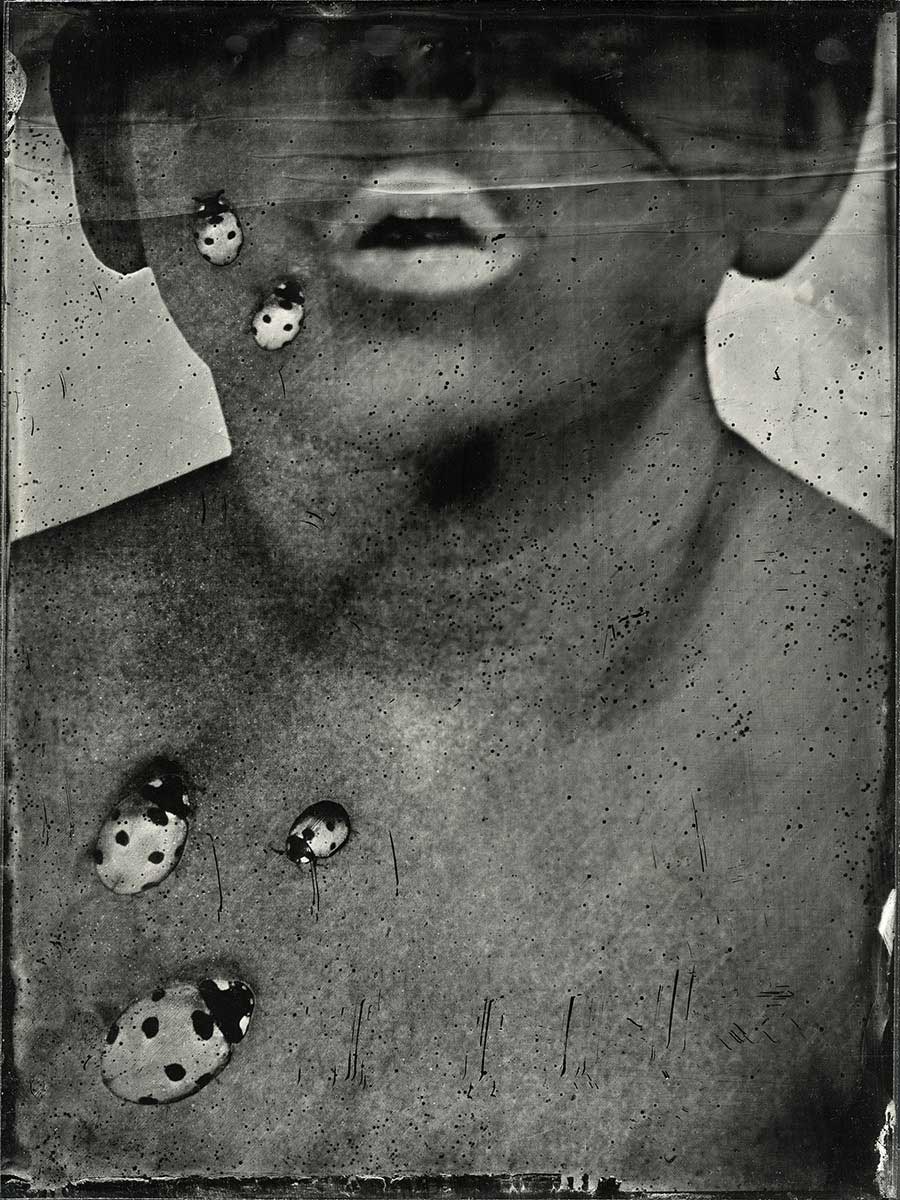
Nice name for droplets of blood. Nurses were catching ladybugs to the tubules, every day.
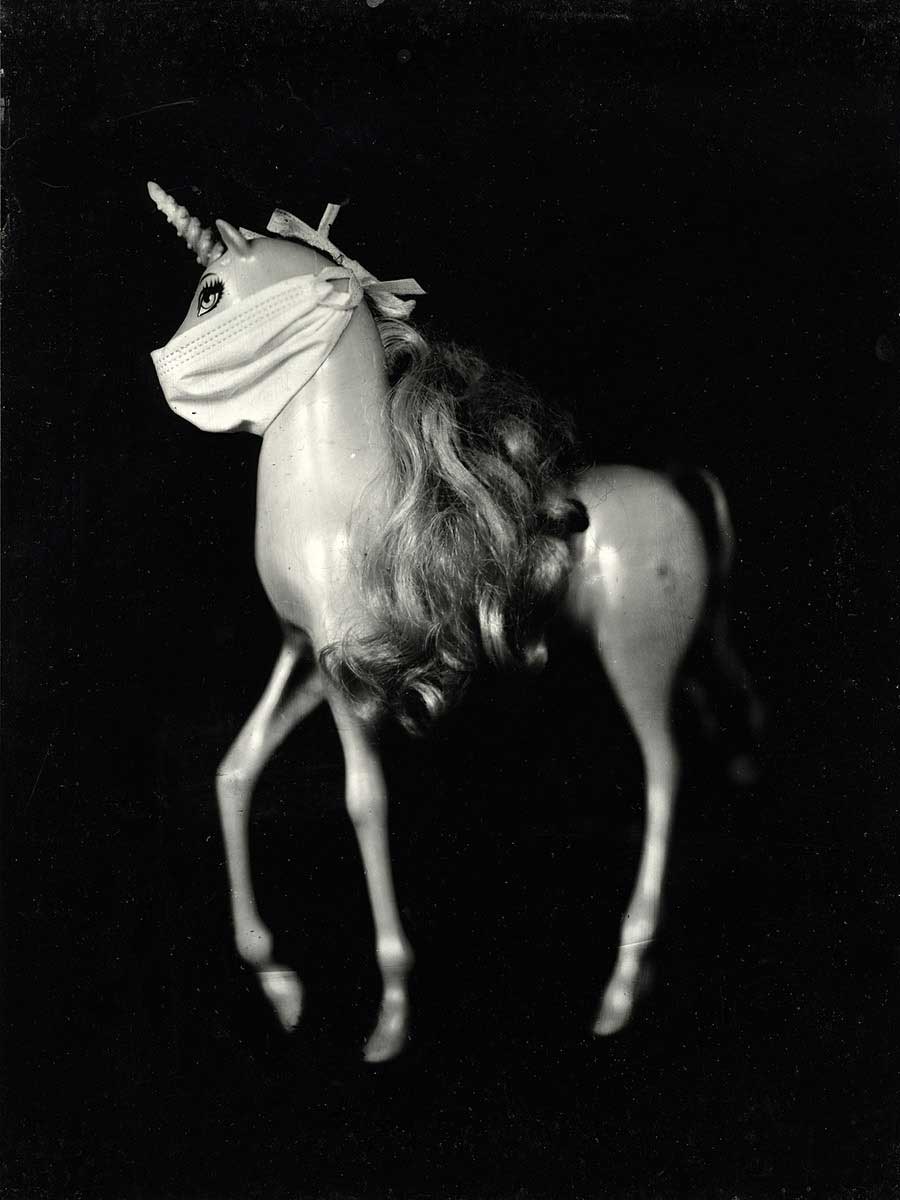
It’s kind of imprisonment, enslavement. Sometimes, my daughter wore it. Sometimes, we wore it. We must use it, when the child resistance decreases due to low white blood cell count. Then everything is dangerous for the patient. On my photo, unicorn wearing mask. Unicorn – a symbol of childhood dreams and magic.
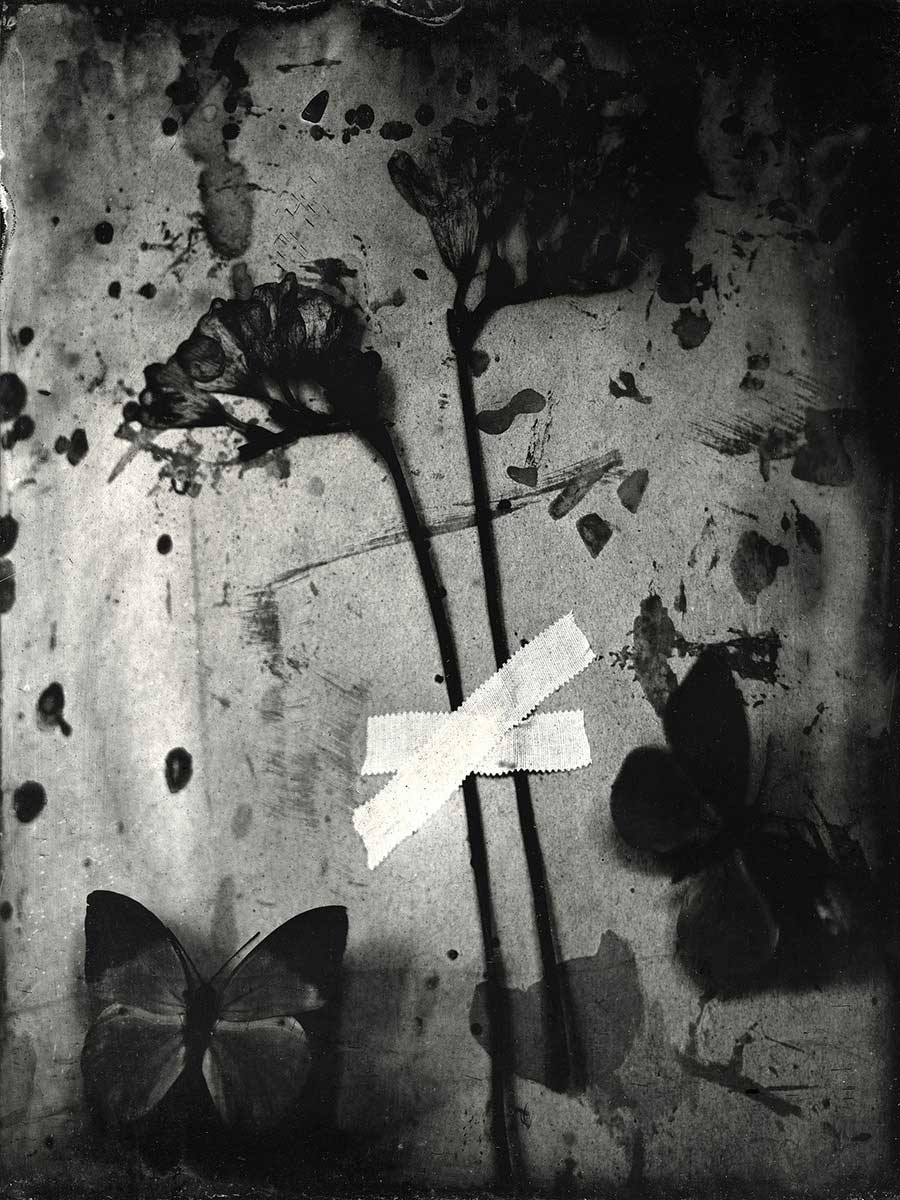
A month after the diagnosis died first child, with whom we were connected. Then I learned, on the funeral of a child brings to white flowers symbolizing innocence. At the first funeral, from the flowered and whitened grave two white butterfly flew into the sky. I took it very symbolic. On my picture flowers are dry, and white is very dirty, almost black …






